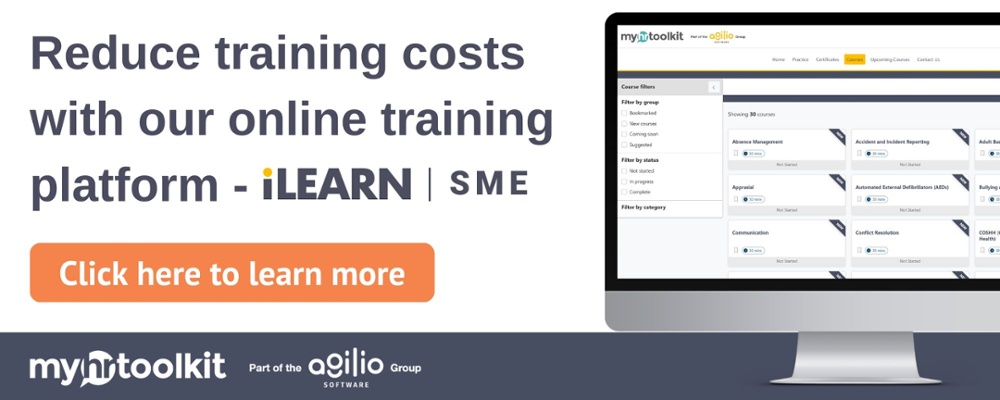How much time should managers spend on developing their team? HR consultant Lyndsey McLaughlin explains why employee development should be a management priority.
Managers are responsible for ensuring their team is motivated, supported, and performing well. This is no mean feat, as there is a delicate balance between supporting staff and micromanaging them.
Unfortunately, managers are often not performing in the way they should, as one of the main reasons employees resign is a lack of support from managers and changes in management. In addition, managers are not spending sufficient time developing employees; they are distracted with admin, meetings, and other day-to-day activities.
The benefits of employee development
The term employee development refers to improving the skills and expertise of employees to support them and help them perform better. When managers spend time on employee development, they have more engaged employees.
Engagement leads to higher performance, increased productivity, and a more positive working environment. Therefore, it makes businesses more profitable. It is particularly relevant to SMEs, as developing your employees will help you to provide a greater service to your customers. It will also help with employee retention.
The number of employees underperforming is increasing, as according to the Employer Skills Survey 2019, training had reached its lowest level in ten years. In addition, there was also an increase of 4.5% in employees who were not fully competent in their roles.
Quite simply, if you want your business to be successful, you need to incorporate employee development into your structure; therefore, managers need to spend more time with their employees.
How much time should managers spend on employee development?

If you ask most employees, you'd probably find that they want a balance in interactions with their manager. They want to work autonomously, without their manager breathing down their neck, but they also want to feel that they are progressing. According to the LinkedIn Workplace Learning Report, 94% of employees would stay with a company if they invested in their careers. Money is not always the deciding factor when someone chooses to leave; it is also often about employee development opportunities.
It is thought that around 6 hours a week is the most effective for managers to spend on employee development. But, of course, this will depend on the size of their team.
Employee development involves many activities. It includes setting up individual career development plans for each employee, where they have their goals and any weaknesses they'd like to work on. It also includes setting expectations.
Employees will never be able to perform in the way you want them to if they don't know what you expect from them. More generally, this involves taking time to check on them and ensure they are happy. Open and honest communication is vital for developing employees and making them aware of any new opportunities they might be interested in. As a growing SME, your employees should be the first to know about any future opportunities before you go out to market.
Employee development and performance management
There is a direct correlation between employee development and performance management. As employee development involves helping employees gain the skills and expertise to perform well in their role, as well as for career growth, performance would inevitably increase. When employees are being developed, they are happier in their job and perform better. Therefore, performance is improved, and this fosters more commitment to the job and the organisation.
How to ensure effective employee development

There are various steps managers can take to ensure they have an effective employee development strategy in place. These include:
Skills gap analysis
A key element of employee development is understanding the skills gaps in your team and how these can be filled. Speak to employees and understand how they work and what they can improve on. It is also essential to understand where they want to be in the organisation, and what skills they may need to achieve this. This can be done as part of a wider business training needs analysis.
Communicate expectations
Employees should understand what expectations they have of them and what is needed for them to progress.
Devise goals
Sit down with your employees and help them devise goals for the future, something tangible they can work towards. Make sure these are also aligned with the goals of the company.
Develop training plans
When you understand the employee's goals and what skills they will require to reach these, you can develop training plans. These may be internal, external, onsite, or online.
Managers must spend time on employee development. When they do this, they will find that their employees will be happier more positive, and the business will benefit as a result.
Read more from the myhrtoolkit blog

Written by Lyndsey McLaughlin
Lyndsey McLaughlin is a CIPD qualified HR consultant and recruitment professional who specialises in HR advice and writing about a range of business and staff management topics for employers and managers.


 Holiday Planner
Holiday Planner Absence Management
Absence Management Performance Management
Performance Management Staff Management
Staff Management Document Management
Document Management Reporting
Reporting Health and Safety Management
Health and Safety Management Task Management
Task Management Security Centre
Security Centre Self Service
Self Service Mobile
Mobile





